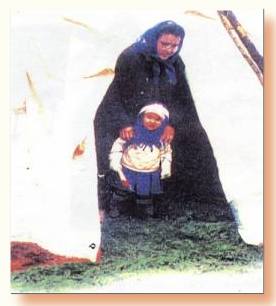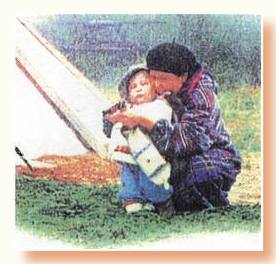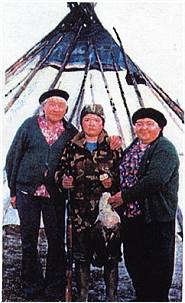Cree
Traditions
Many Aboriginal peoples have what might be better termed
as an “ecocentric” concept of the person; in which other people, the land, and the animals are all in transaction with the self and indeed, in some sense, constitute aspects of a relational self.
Damage to the land, appropriation of land, and spatial restrictions all, then, constitute direct assaults on the person.
Traditional hunting practices are not just means of subsistence, they are sociomoral and spiritual practices aimed at maintaining personal and community health.
Cree Words and Meanings
How We Got There
Frequently Asked Questions
Chisasibi Destination Wedding
Adventure and Cultural Tourism Survey
Chisasibi Information
James Bay Road Information
Driving to Chisasibi in the Winter
Trip Diary
Sharing Our Culture
Build an
Authentic Cree
Teepee CD

Picture Slide Shows
Portrait Views
Landscape Views
To See Some Pictures Taken In and
Around Chisasibi
Northern Lights at Chisasibi
Sunrise and Sunset
Some Chisasibi Scenes
Some Useful Links:
"A Cree Phrase Book"
Cree Online Language Class |
The Crees of Chisasibi
Some of Our
Traditions

The Walking-Out Ceremony
The Walking-Out Ceremony is an age-old tradition that is
still being carried out today by the Crees of Eastern James Bay, in all of
the nine communities. The ceremony is held in the spring and starts
right after dawn.
The meaning of this ceremony is that the child touches
Mother Earth for the very first time. The child is introduced to
Mother Nature by meeting the sunrise, carrying all her or his implements
which symbolize the role she or he will play in later life.

First Snowshoe Walk

The First Snowshoe Walk is done in the winter.
This is done to symbolize that the child is ready to travel with the
adults on his or her own. The child is usually around the age of
five or six.
This would be done when the family would move to a new
winter lodge. The parents or grandparents would prepare the first
snowshoes for their child. When the day came for the move to the new
camp, everything is already prepared including the food for the feast.
The parents walk with their child to the new
camp. After everyone has settled in the camp, then they have the
feast in honour of the child's First Snowshoe Walk.
 First Kill
First Kill
This tradition has been practiced and is still very much practiced
today. When a boy first makes his first kill, this could be a small
bird, ptarmigan or a duck, it is given to the grandmother or elder.
The bird is cooked and shared with other family members. The beak of
the bird is kept and placed in a bowl on top of pemmican or steamed
pudding. A feast is held to honour the young hunter and everyone is invited. Later on when the
boy kills his first goose, everyone hears about it and there is a big
feast.
For a girl, it will be a fish. A little girl goes
fishing with parents. When she catches a fish, the jawbone is kept
and this event is celebrated the same way as when the boy makes his first
kill of a small bird and it could also be a fish.
Background Native Music -
"Spirit of the Wolf"
from Wind Walker Music
Please
take a few minutes to participate
in our Tourism Survey
For Cultural Tourism Information
Chisasibi Mandow Agency
P.O. Box 720
Chisasibi, Quebec
Canada J0M 1E0
Telephone: (819) 855-3373
Fax: (819) 855-3374
Inquires: Mandow
Agency
Please Bookmark This Site
and if you liked this site
e-Mail
it to a friend
|





 First Kill
First Kill